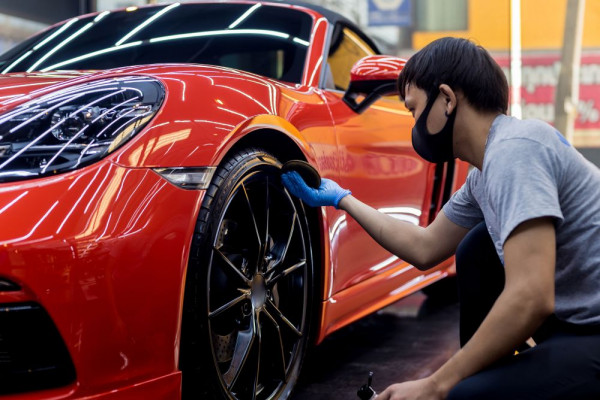The Ultimate Guide To Ceramic Paint Protection: Everything You Need To Know

Ceramic paint protection has developed as a breakthrough solution in the automobile industry for maintaining your car's paint and ensuring its long-lasting brilliance. Unlike traditional wax or sealants, ceramic coatings provide enhanced durability, resistance to environmental contaminants, and a deep, glossy finish. In this detailed guide, we will delve into the world of ceramic paint protection, exploring its benefits, application process, maintenance, and more. By the end, you will have a thorough understanding of this cutting-edge technology and why it has become a preferred choice for car enthusiasts.
What Is Ceramic Paint Protection?
Ceramic paint protection is a liquid polymer that forms a strong bond with the car's paintwork, creating a transparent, protective layer. The primary ingredient in ceramic coatings is silicon dioxide (SiO2), which provides exceptional durability and hydrophobic properties. This invisible shield shields the paint surface from UV rays, acid rain, bird droppings, dirt, and other contaminants while giving the car a lustrous, showroom-like finish.
The Benefits Of Ceramic Paint Protection
- Long-Lasting Protection: Ceramic coatings offer superior longevity compared to traditional methods. Depending on the quality of the product and regular care, they can last anywhere from 2 to 5 years.
- Enhanced Gloss And Depth: The hydrophobic properties of ceramic coatings create a deep, reflective shine that enhances the car's appearance. The paint looks vibrant and glossy, elevating its aesthetic appeal.
- Protection Against Uv Damage: The sun's harmful ultraviolet (UV) rays can fade and oxidize the car's paint over time. Ceramic coatings act as a barrier, blocking the UV rays and preventing paint damage.
- Chemical Resistance: Ceramic coatings protect the paint from acidic pollutants such as bird droppings and tree sap, which may etch and destroy it.
- Easy Maintenance: Ceramic coatings make the car easier to clean. The hydrophobic properties repel water, dirt, and grime, reducing the need for frequent washing.
The Application Process
- Surface Preparation: Before applying a ceramic coating, thorough preparation is crucial. The car's paintwork should be washed, decontaminated, and polished to remove any impurities or imperfections.
- Application Techniques: Ceramic coatings can be applied by hand or with a machine. The process involves carefully spreading the coating on the surface and ensuring even coverage. Multiple layers may be required for optimal results.
- Curing Time: After application, the coating needs time to cure and bond with the paint. The curing time can range from a few hours to several days, depending on the product.
Maintenance Tips For Ceramic Coatings
To maximize the longevity and effectiveness of ceramic paint protection, regular maintenance is essential. Here are some tips to keep in mind:
- Gentle Washing: Use a pH-neutral car wash shampoo and a soft microfiber wash mitt to avoid scratching the coating. Avoid harsh chemicals or abrasive tools.
- Avoid Automatic Car Washes: While ceramic coatings provide protection, automatic car washes with brushes can still cause micro-scratches. Opt for hand washing or touchless car washes instead.
- Use Quality Products: Choose detailing products specifically formulated for ceramic coatings. These products are designed to maintain the coating's hydrophobic properties and enhance its performance.
- Regular Inspections: Periodically inspect the coating for any signs of damage or degradation. Promptly address any issues to prevent further deterioration.
